
At an altitude of 13500ft, Nathang Valley or Gnathang Valley is popularly known as the 'Ladakh of East India'. Nathang Valley is also considered the highest and most beautiful point to stay in the Indian Part of the old silk route at Sikkim. Surrounded by the snow-capped mountains Nathang Valley due to its harsh cold weather had remained sparsely populated for many centuries making it a cold desert. With a meandering crisscrossing stream, Nathang Valley is one of the most remote valleys with Tibetan habilitation in the Himalayas.
Visiting Nathang Valley can be troublesome if you don't opt for a tour package that includes facilities like pick-up, car for sightseeing, accommodation, meals, drop, and more. North Bengal Guide offers the finest Nathang Valley package at quite a pocket-friendly price.
Nathang Valley is one of the hidden gems of the eastern part of the Sikkim region due to its extremely cold weather many travelers are still unaware of the astounding beauty Nathang Valley offers to its visitor. Reminisce of the old silk route still lingers in the Nathang Valley and can be felt while traveling to the Ladakh of East India. Flanked by the mountain on all the sides and visited by migratory birds just before the onset of the winter, Nathang Valley is a gateway to escape from the hordes of people in the din and bustle life of the city. The view of clouds surrounding the snow-clad mountains and the Chinese Watch Towers on Jelep La are clearly visible from Nathang valley with naked eyes, it is a sight that has lured many travelers from around the world.
Watching the awe-inspiring phenomena of the sun rising above the horizon and slowly revealing the entire Bhutan Valley and a part of China whilst glazing the Mt Kanchenjunga with a golden and orange hue and making its shine like covered with diamonds from Ganek in Nathang Valley is a spell bounding phenomena. It usually remains covered with thick snow from January to April making Nathang Valley look like a winter wonderland. With an uphill trek of 10mins from the Nathang Valley visitors can witness an astounding panoramic view of the entire Eastern Himalayas, with Bhutan, China, and the hills of Bengal including Darjeeling, the entire Mt. Kanchenjunga range, and River Brahmaputra meandering across China and entering India.
Near the valley, you will get to see many beautiful places to visit. Have a look at the major ones as mentioned below-
Thambi Viewpoint - Thambi viewpoint is situated at an altitude of 3400 m, it gives a stunning panoramic view of Mt. Kanchenjunga. The zigzag roads seem like 30 hair pins designed by the engineers.
Lungthung - This place is very comfortable for a homestay, tourists may feel more comfortable here and will get some great hospitality. Lungthung is popular for the stunning view of Mt. Kanchenjunga fully covered with snow and also the zigzag roads give an amazing view of the place. It is situated close to Thambi View Point.
Eagle's Nest Bunker - For the sweeping view of the entire Kanchenjunga peaks and the surrounding places, the Eagle's Nest Bunker near the valley is truly worth visiting. The sunrise over Kanchenjunga from Eagle's Nest looks quite Phenomenal.
Tukla valley - The valley of Tukla is another popular place to visit near Nathang Valley. This is a war-dedicated valley that worked to honor the British soldiers, who won during the battle of Tukla. The majestic panoramic view of Mt. Kanchenjungha and its allied peaks are quite prominent here.
Kupup Lake - Situated at an altitude of around 13066 feet above sea level, Kupup Lake is mostly known as the Elephant Lake for its resemblance to an Elephant. It is called Bitan Choo by the locals and is also considered to be a sacred water body.
Old Baba Mandir - To honor the Sepoy Harbhajan Singh, the Old Baba Mandir is built. It is one of the best places to see along with the Harbhajan Shing's bunker and the place where he used to live.
Every season highlight different aspects of Nathang Valley. In autumn the valley looks like it's covered in a carpet of golden and brown crest when the grass dries up, in the rainy season it's covered in a colorful riot of beautiful flowers and during winter Nathang Valley is buried in 5 feet of snow.
April to June - If you are a nature lover and love to feel the bounty of nature, you should definitely visit Nathang valley, during this period of time.
July to September - This is the time of monsoon, with heavy rainfall. also during this time, the valley is flourishing with bright green forests.
October to March - If you want to experience the snowfall in Nathang Valley while observing the extensive view of snow covering the Himalayan range above the Tibetan plateau. During this time the temperature goes on reducing, so it is advisable to take warmer clothes with you.
Witness a sunrise beyond the description from a valley where the legacy of the glorious silk route still lingers, while basking in the sight of rolling grassland surrounded by the majestic mountains and fluttering prayer flag dotting the hills of Nathang Valley, it is a valley that shows the glimpse of heaven for all nature lovers traveling to west Sikkim.
By Train - New Jalpaiguri railway station (NJP) will be the nearest railway station from Nathang valley. The distance is about 169 km. To cover the road distance, it would take around 5.5 hours.
By Air - Bagdogra Airport will be the nearest airport to reach Nathang valley in a limited time. The distance is about 1605 km via NH10 and the time taken will be 5.5 hours to reach the spot.
By Road - Travelers can hire shared taxis or reserved taxis from both the railway station and airport to reach Gangtok and then you need to change vehicles to reach Nathang valley. The distance of Nathang valley from Nathang valley from Gangtok is 68 km which takes 3 hrs to reach the spot.
The best time to go for Nathang Valley Tour is during the months of April and May. If you go to the valley any time between these two months, you will be welcomed by the blossoming rhododendrons. You will witness the whole valley covered in colourful wildflowers and lush greenery. From the beginning of July, Monsoon begins to enter this valley and lasts until September end. During the monsoon season, the road that leads to the valley becomes landslide-prone and hence not an ideal time to pay a visit to the valley.
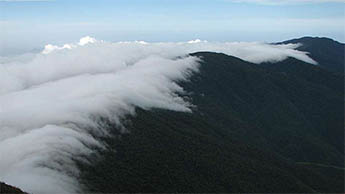
Perched on the rugged terrain of the lower Himalayas in East Sikkim at an altitude of 10100ft, Zuluk or Dzuluk
View Details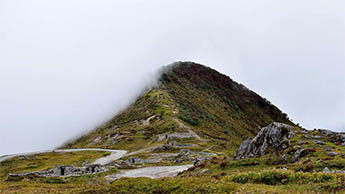
At an altitude of 13500ft Nathang Valley or Gnathang Valley is popularly known as the 'Ladakh of East India'
View Details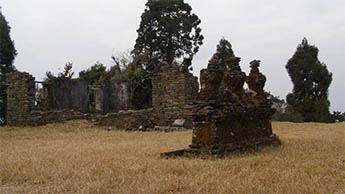
Situated in the West Sikkim about 40km from Gangtok is Rinchenpong a cool and calm hamlet popularly
View Details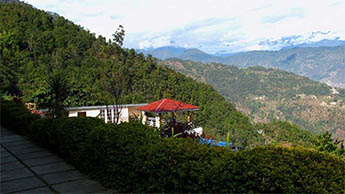
Nestled on the lap of Himalayan foothills in the West Sikkim is a picturesque village called Kaluk
View Details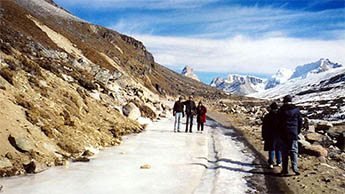
Located in North Sikkim at an altitude of 13500ft nearly 144 kilometers away from lively and warm town Gangtok is a small valley
View Details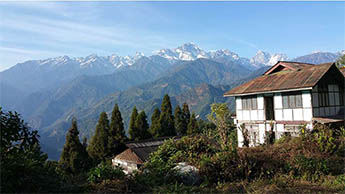
Far away from the maddening city crowd amidst the pristine nature of the south Sikkim, Borong at an altitude of 5800ft has
View Details
Teesta Bazar is a small town located 4km downstream from the industrial town Melli on the right bank of River Teesta
View Details
Over the past decade there has been several trade routes, which played a major role for the rise of international trades round
View Details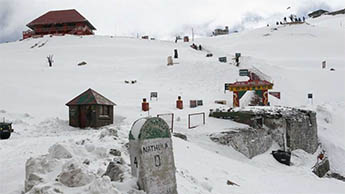
Sited at a distance of 56kms from Gangtok in Eastern Sikkim, Nathula is a mountain pass on the Indo-Chinese
View Details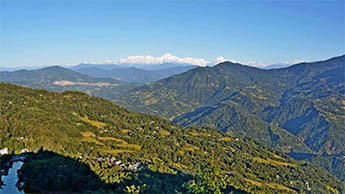
Perched on a hilltop above the Dalapchand village under the Rongli Sub-Division of Eastern Sikkim sited adjacent to one of
View Details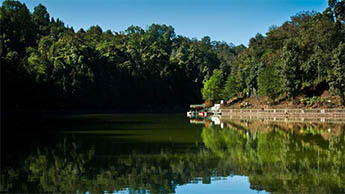
Located on the edge of Himalayas in the East Sikkim at an altitude of 1498mt is a quaint village called Aritar
View Details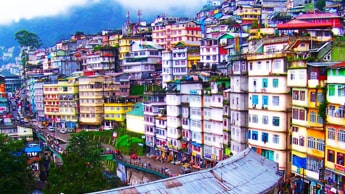
At an elevation of 1,650 meters, Gangtok is Sikkim's largest and the most popular town with full of tourist attractions.
View Details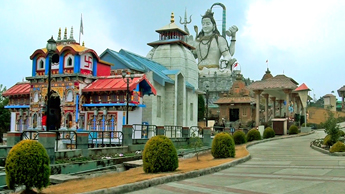
Namchi is a pictorial landscape in South Sikkim situated at an elevation of 1,315 metres.
View Details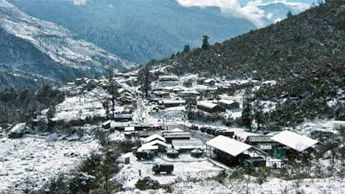
Lachen is one of the vibrant yet less explored places in Sikkim at an elevation of 2750 meters.
View Details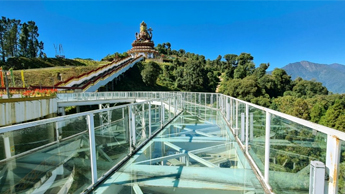
Approximately 115 km distance away from Gangtok, Pelling is a perfect hideout for tourists.
View Details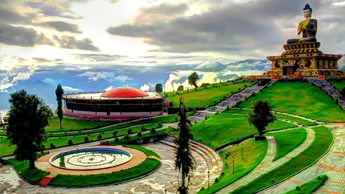
At an elevation of 7000 feet above sea level, Ravangla is a perfect hill station for travelers.
View Details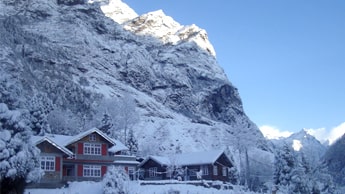
Lachung is a small hamlet in Sikkim surrounded by and is blessed with breathtaking tourist attractions.
View Details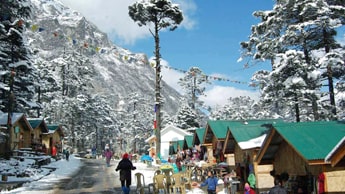
Yumthang in Sikkim offers ethereal beauty and spectacular Himalayan views which makes it a must-see destination.
View Details
At an elevation of 17000 feet, Gurudongmar Lake is a serene lake in northern Sikkim.
View Details